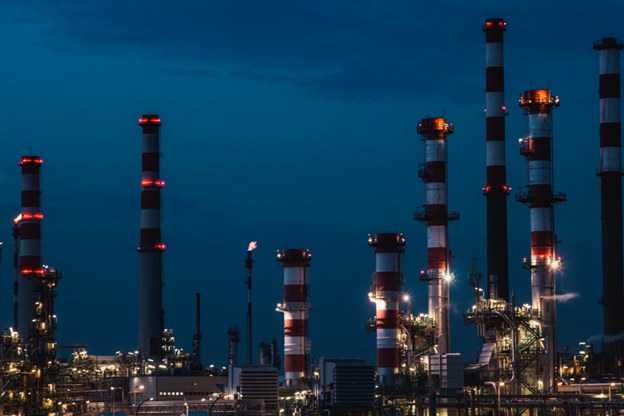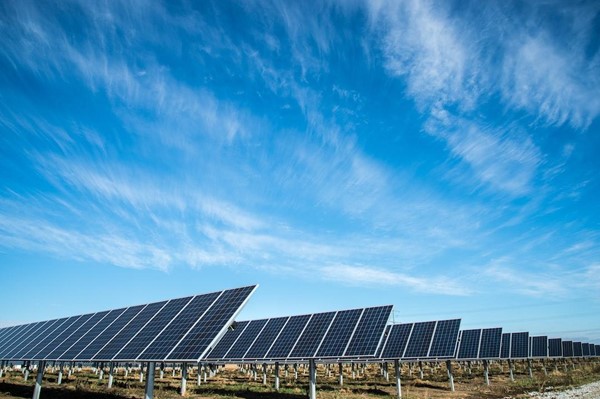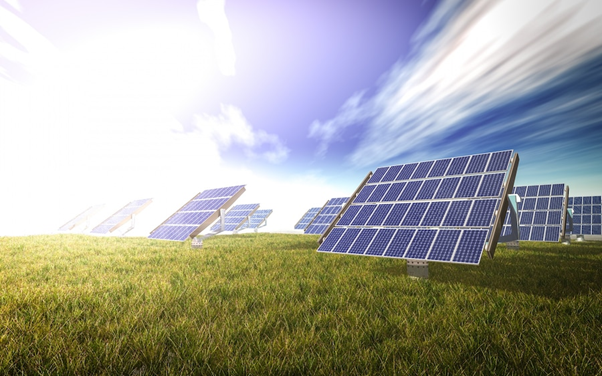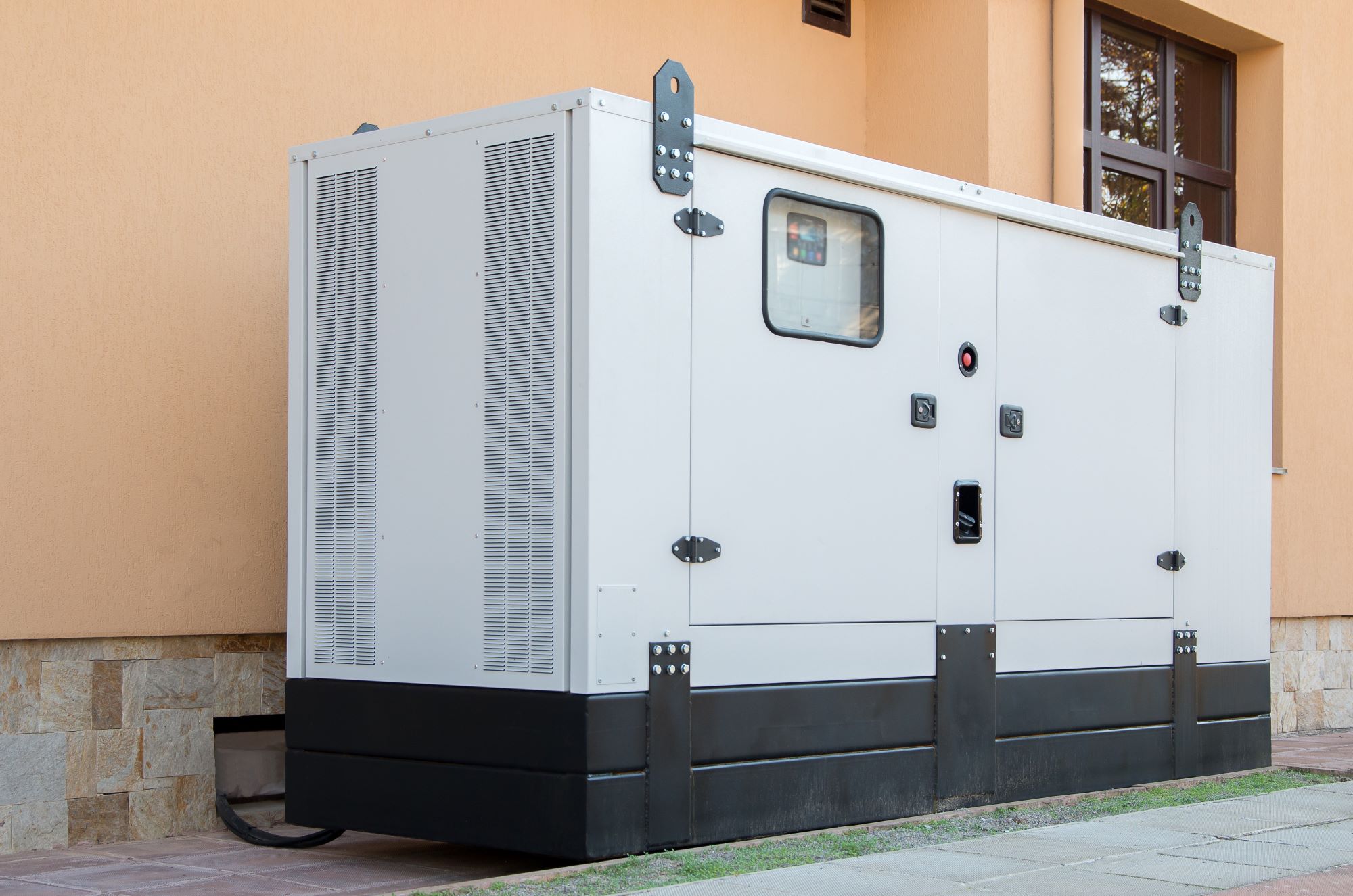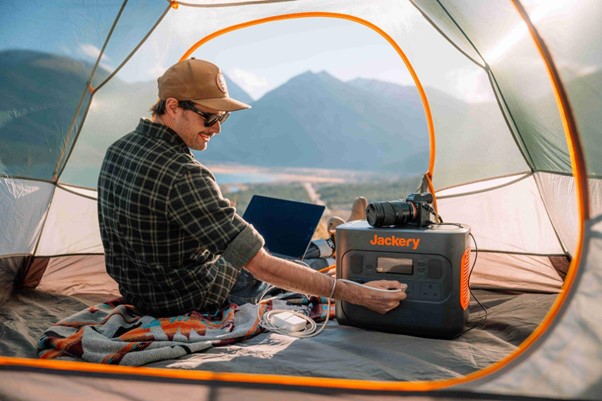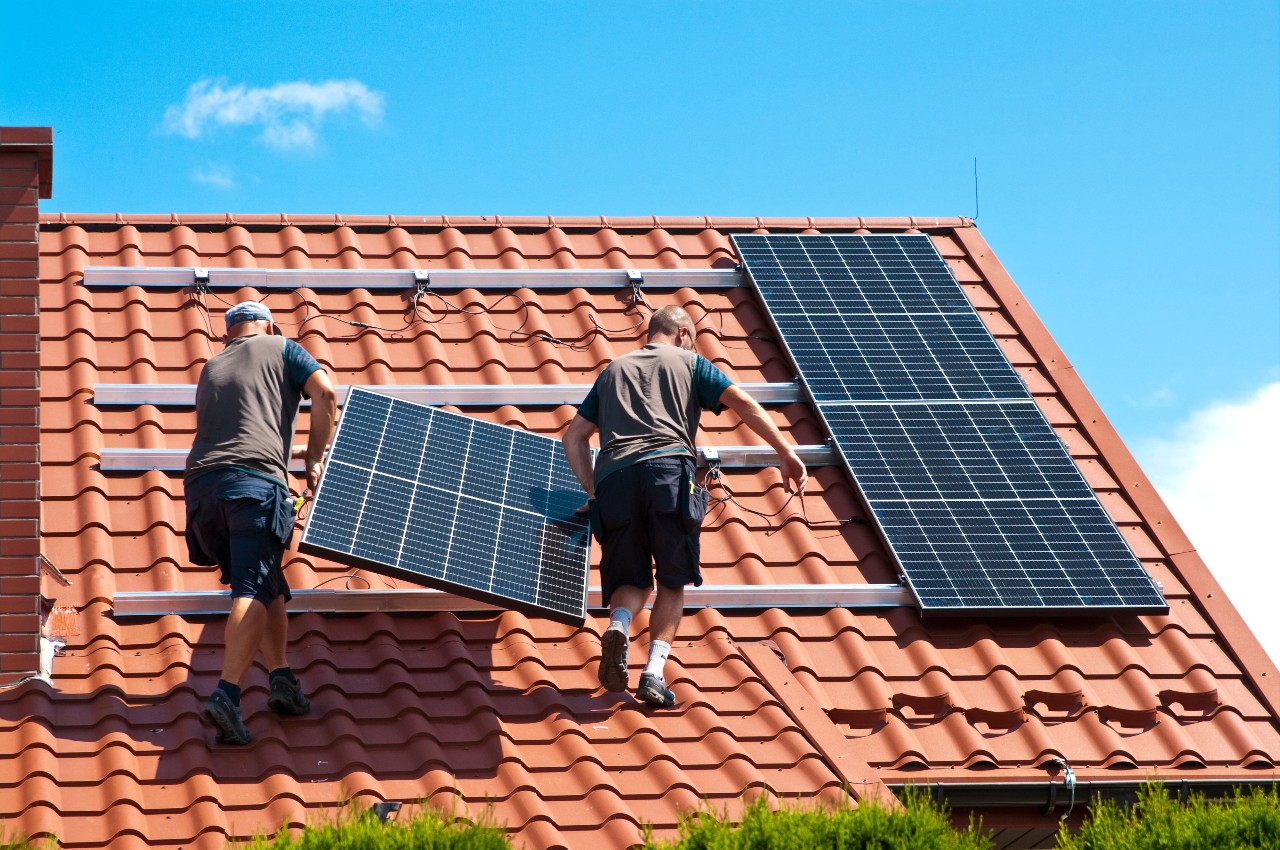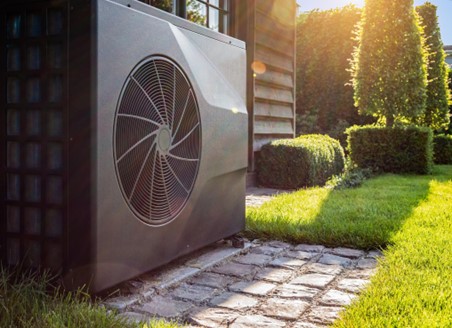How Solar Equipment Helps Change the Way World Generates Renewable Energy
Solar energy is increasingly popular and no matter where you live, the chances are you’ve come across solar panels placed either on the roofs of houses or in carefully designed sections known as “solar farms”.
Solar panels are one of the main components of the solar system and they help take advantage of the renewable source which is the sunlight to produce the energy we can further use in our households.
With solar energy on the rise, in this article, you’ll learn everything you need to know about these systems, how they work, and even if they’re profitable for an average household – so keep on reading!
What is Solar Energy?
Solar energy is the type of energy that’s generated from sunlight, which is a renewable source and the principle is very similar to wind turbines that “harvest” wind which is another renewable source that helps produce energy.
Sunlight is “collected” by solar panels which are a part of a solar energy system that includes a couple more components that help turn the sunlight into electricity or store the energy in thermal cells for further use.
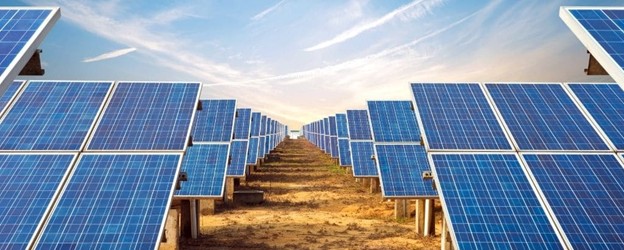
How is Solar Energy Generated and How Does the System Function?
Solar systems are specifically designed to work in one of two ways. The first and most common way is for a solar system to use PV (photovoltaic) panels to convert sunlight to electricity.
The other way is for a system to feature mirrors that can concentrate solar radiation.
Such a system helps users to generate electricity that can power up an average household, or store the energy for later use (thermal storage) such as heating the house.
The sole energy generation happens straight in the photovoltaic panels which can absorb the sunlight in the cells of the panel. Then this energy is able to create charges which move according to the electrical field in these panel cells. That’s the whole principle of how electricity is generated inside a panel and how it flows.
However, if a solar system utilizes mirrors that concentrate solar radiation, they reflect the sunlight to receivers that collect this energy. These receivers also have the ability to convert this energy to heat.
At this step, users can choose if they’d like to generate electricity or to store that energy for later use, for example, to heat the house.
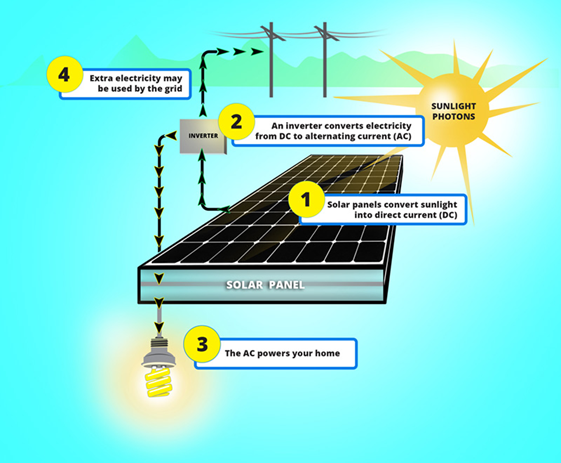
What are the Main Components of a Solar Energy System?
Solar panels are the most known component of solar energy systems, but there are actually 4 most important components of a solar system that are suitable for a household.
The main components include:
- Solar panels
- Inverter
- Electrical panel
- Electric meter
And on top of all of these components, another very important component, which isn’t physical, is the sun. Without the sun, the whole solar energy system wouldn’t work.
Of course, on top of these main components, there are additional components that also play an important role in the solar energy system.
Additional components include:
- Mounting systems
- Balance of systems
- Battery accessories
- Charge controllers
- Energy storages
- Inverter accessories
- Generators
- Wires and cables
- Electric box panels
Depending on the size of a solar system and its purpose, the cost and number of the components required can differ from what others might require. However, average solar energy systems used to provide for average households will always provide an accurate estimate of the equipment required to run the system, as well as the cost projection.
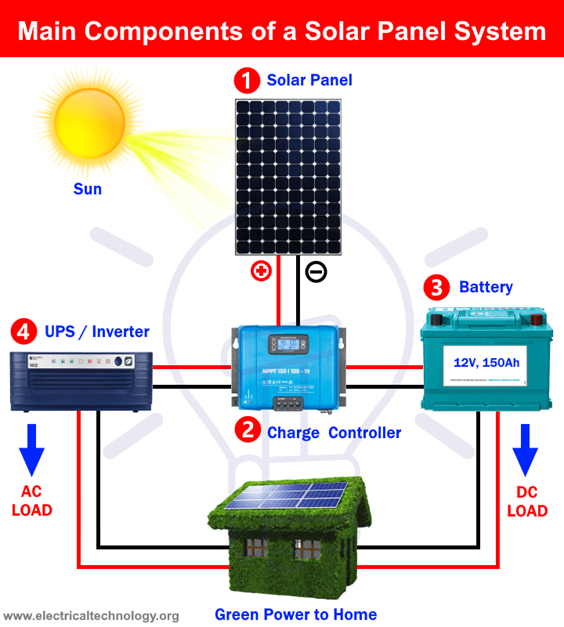
What Can You Use Solar Energy For?
The best thing about solar energy is that it’s very versatile and once sunlight is collected and generated, consumers can choose in which way they’d use the collected energy.
The most popular use of solar energy is to generate solar electricity to power the household or a facility.
However, solar energy can also be used to heat the water, provide heating for the household, provide ventilation for a facility, or even to light up lights in or around the house.
Some people get really creative and even use solar energy to heat up pools, power pumps, charge batteries, or ensure that their whole house is powered up or create a reserve for when the main grid goes down.
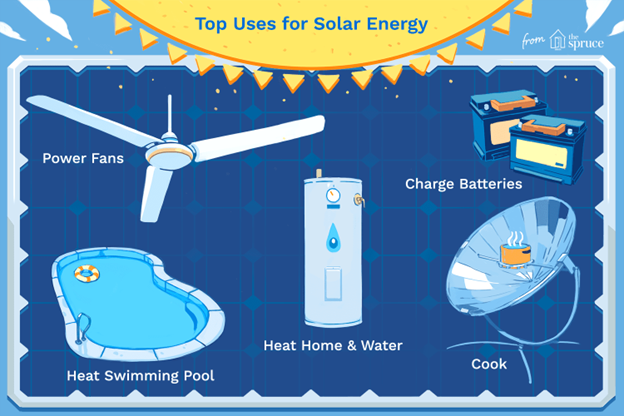
Biggest Advantages of Solar Energy
There are many advantages to solar energy and the installation of solar energy systems for personal benefits.
The biggest benefit is the one that benefits the Earth since solar energy systems don’t pollute and don’t cause greenhouse gasses.
Depending on the location where you live, a solar system can help you produce solar energy for almost the whole year since even cloudy days can still produce a decent amount of energy.
The whole solar energy system installation process can be a bit pricey, but it has a high return on investment since it can replace your utility bills, meaning you won’t have to pay for electricity or heating anymore.
With modern technology, solar panels can last up to 30 years and they require no maintenance at all which also improves the return on the installation of solar energy systems.
If you ever happen to have an excess of energy, you will be able to sell it to a power company if you are connected to an inner-tied grid.
And with the various ways to install solar systems, you can either have them installed on your house or anywhere in the field where there’s no shadow.
Are There Any Downsides to Solar Energy Production?
There are a couple of downsides to solar energy production, and one of the main ones is the up-front cost required for the whole system and the installation of the system.
You’ll be required to have a lot of space available since not solar panels aren’t 100% efficient so the more panels you can fit, the better results you will be able to achieve.
On top of that, while cloudy days can still produce some energy, they really don’t produce enough to meet the expectations and ensure a quick and smooth return on investment. Of course, lower solar energy production in winter is also one of the downsides to consider if you’re going fully off-grid and will only rely on solar systems.
Who Uses Solar Energy the Most and What is the Future of Solar Energy Systems?
According to the statistics published by NS Energy in the most recent study, China generates the most solar energy with about 205 GW per year.
The United States follows but the whole country only produces not even a third of what China produces, 76 GW per year.
Japan takes third place by producing 63.2 GW per year where Germany follows with 49.2 GW and last in the top 5 is India with 38 GW.
However, the number of energy produced increases each year so these numbers are definitely going to increase which shows how countries are dedicated to reducing emissions in the energy sectors by producing green energy with the help of solar energy systems.
The increase doesn’t only have to do with the number of solar systems being installed, but also with more efficient panels that are helping improve the efficiency of the gathered sunlight.
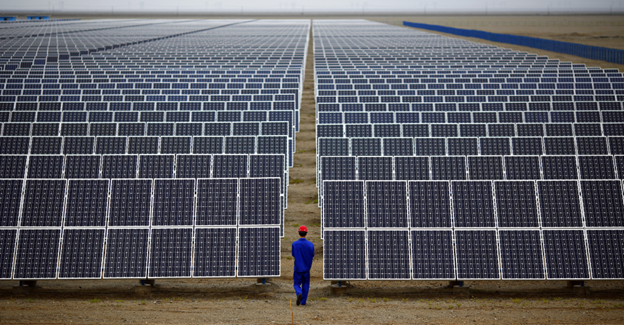
Rotating Solar Panels With the Help of Slip Rings
Getting as much sunlight as possible is the biggest key of the solar panel systems since, without sunlight, these systems just wouldn’t work.
Installing solar panels is wisely done by finding the angle on the location that will help “harvest” and collect as much sunlight as possible.
While for a long time solar panels have been set at a certain angle, with modern technology and the help of technological advancements such as swiveling slip rings for swiveling solar panels, owners can now achieve the highest efficiency from their solar panels.
Companies such as Moflon specialize in producing custom solutions, but also advanced slip rings that can help support swiveling solar panels. Moflon is known for working with companies in various industries to produce slip rings that will fit modern needs, and a swiveling slip ring is exactly what a swiveling solar panel needs.
Swiveling slip ring helps maintain a solid contact and transmits electrical signals while removing wires from joints of a rotating solar panel. This way, with the rotation, solar panels can adjust to the best position according to the sun’s position to maximize the sunny days.
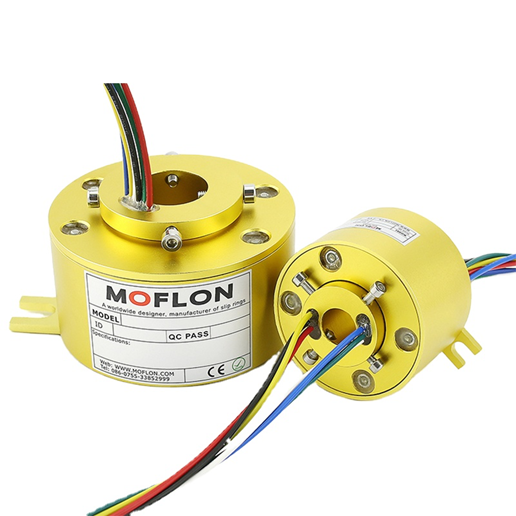
How Affordable and Efficient is Solar Energy?
Earlier, we’ve mentioned that the initial cost of purchasing the whole solar energy system and having it installed is a bit pricey, but is it worth the investment and how much will you have to give up for this?
Even though the cost of the first solar system type has come down a lot, it is still quite expensive to have it installed.
An average household can expect to pay anywhere between $4,000 to $16,000 for a residential household.
The cost is this high due to the type of solar system, all the equipment required to power the system, and the solar module which is often the single most expensive piece of equipment in the whole system.
Also, the installation cost is included in the price.
Even though solar systems might not seem very affordable at first, you should consider the amount of money you can save by using them in the long run.
Not only can you replace the electricity bill that you no longer have to pay for a good amount of the year, but you will even be able to sell some of the excess energy you generate to the power grid.
And with plenty of versatile ways to use sunlight for your household, solar panels are definitely a good idea for everyone who lives in an area where sunshine doesn’t lack.
The Lifespan of Solar Energy Equipment and Do They Become Toxic Waste?
When first solar energy systems were introduced, many feared that after their lifespan they would become a toxic waste that will additionally cost you to properly get rid of.
Some even claimed that solar panels will create even more toxic waste than nuclear power plants. However, this isn’t true with modern solar energy systems, but can be true with some other solar panels, depending on the quality of the manufacturer.
The average span of the solar panels is about 30 years which is more than enough for your investment to pay off. Other parts of the equipment are also something you shouldn’t worry about as they’re not exposed to the sun the way solar panels are.
Solar Systems VS Wind Turbines – Is Solar Energy The Cleanest Source of Energy?
Wind turbines are another very famous way to create energy from the wind, and the facts show that wind energy is one of the cleanest sources of energy.
It only produces 4.64 grams of CO2 per 1 kWh while solar systems produce 70 grams of CO2 per 1 kWh.
Wind turbines also require less energy to produce more energy, making them way more efficient than solar panels which require a lot more energy to be efficient.
However, just because wind turbines are a lot more efficient, it doesn’t mean that they’re a lot more convenient. Wind turbines cost way more than solar energy systems and even though there are wind turbines suitable for residential areas, they’re not as convenient as solar energy systems.
Therefore, solar energy systems are the way to go for residential areas and households, while wind turbines are a great solution for countries in general as a way to reduce pollution and generate more energy from renewable sources.
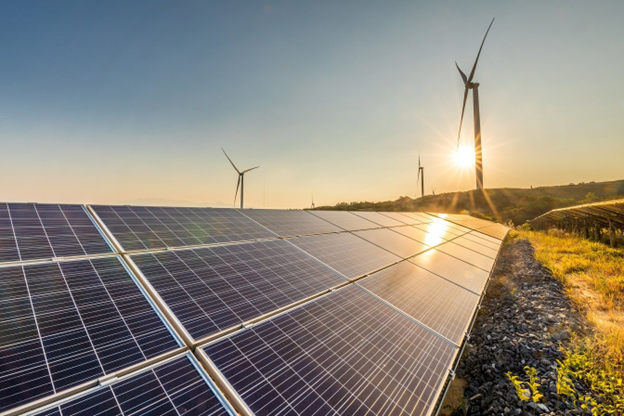
Conclusion
Solar systems are definitely making a change in providing a cleaner source of energy while reducing fossils and toxic greenhouse gas emissions.
They are also considered a solution to reduce global warming and urban heat island. Even though they’ve started being used in the last 2 decades, the rapid pace at what they’re developing is making them more affordable and efficient, making them an ideal solution for most average households.
When was the first time you saw solar panels and did you ever take advantage of a solar system?




